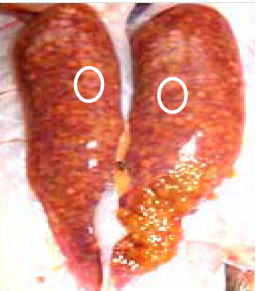ASPECTS OF THE REPRODUCTIVE BIOLOGY OF HETEROBRANCHUS LONGIFILIS (VALENCIENNES, 1840) IN RIVER OKURA, KOGI STATE CENTRAL, NIGERIA
Keywords:
Heterobranchus, fecundity, gonads, lengths, gonadosomaticAbstract
The reproductive biology of Heterobranchus longifilis was studied from October, 2011 to October 2012. Aspects studied include identification of gonad maturation stages, the sex ratio, breeding season and fecundity of the species. 654 samples of Heterobranchus longifilis were obtained from the local fishermen at Ofejiji. They were caught with gill net (4.5 x 4.5cm mesh size), setline with hooks of various sizes (12, 7, and 4). Samples were weighed and measured using the kitchen weighing balance and a meter rule respectively. The gonads were classified into stages I, II, III, IV, V, VI and VII. There was no significant difference in the female to male ratio (p > 0.05). There were 28 fecund females used for estimation of fecundity. Fecundity ranged from 17,001 (body weight = 625g, SL = 38.6cm) to 97,122 (body weight = 5158g, SL = 71.5cm) with mean value of 37744 ± 21648 eggs. Gonadosomatic index was observed to be highest in October with value of 2.80 ± 0.2 for female and 1.05 ± 0.1 for male. The frequency of occurrence of gonad stage VI was highest in October with value 85.7% and 74.2% for male and female respectively. In February, frequency of occurrence of gonad stage VI (15.6% for male and 16.7% for female) and mean gonadosomatic index peak were observed for female (1.2 ± 0.1) and male (0.4 ± 0.05). Monitoring the mean monthly gonadosomatic index and frequency of gonad maturation stages, spawning occurred mainly in October. The gonadosomatic index peak and presence of gonad stage VI observed in February could possibly be due to the residual left over eggs in the gonads of the species after its breeding season in October.
Downloads





